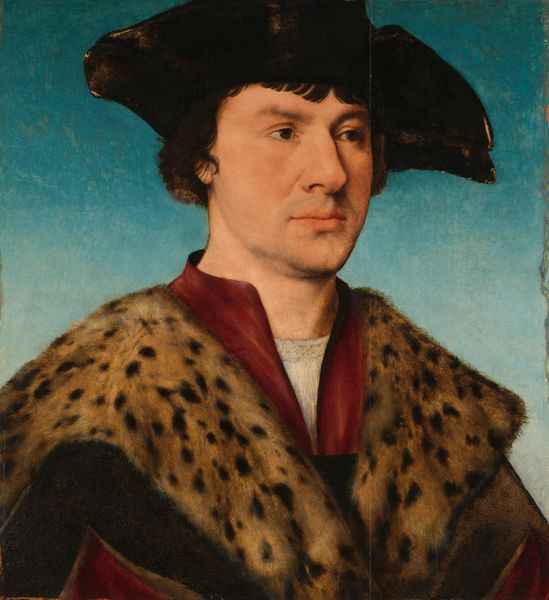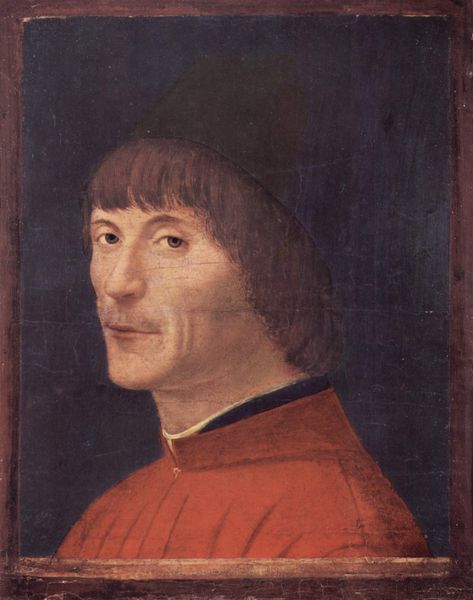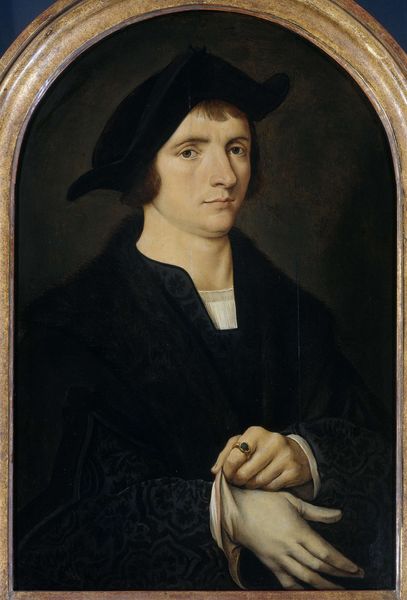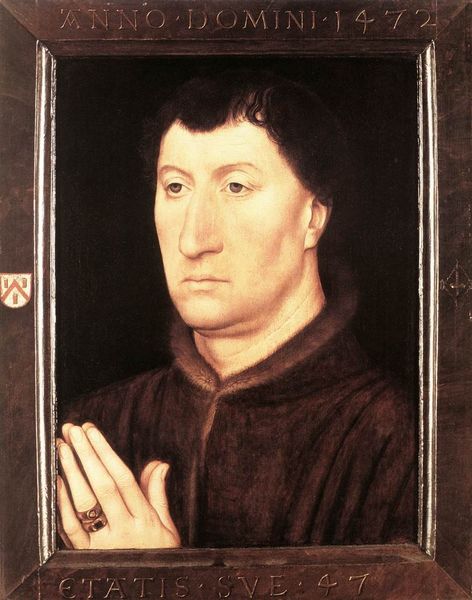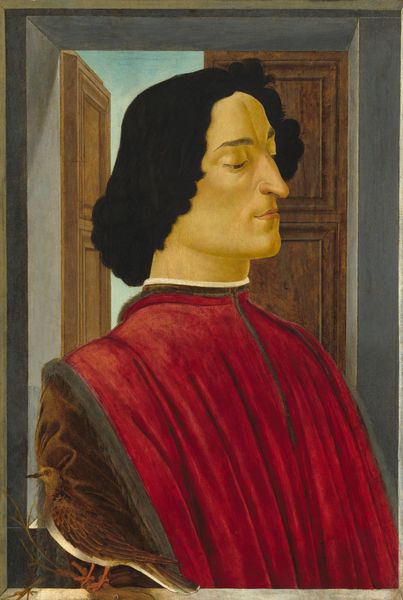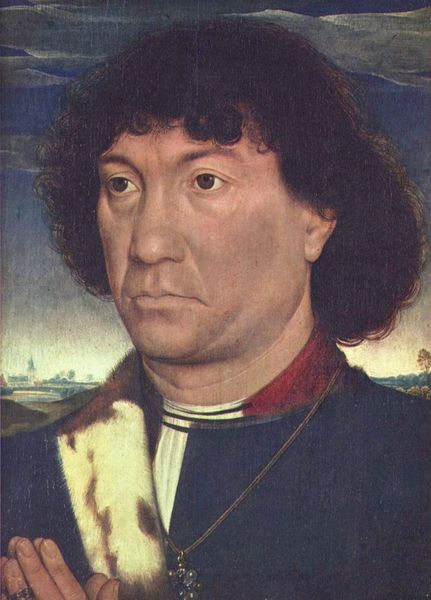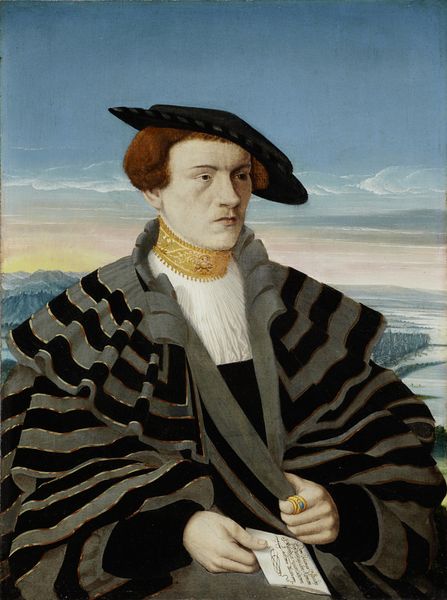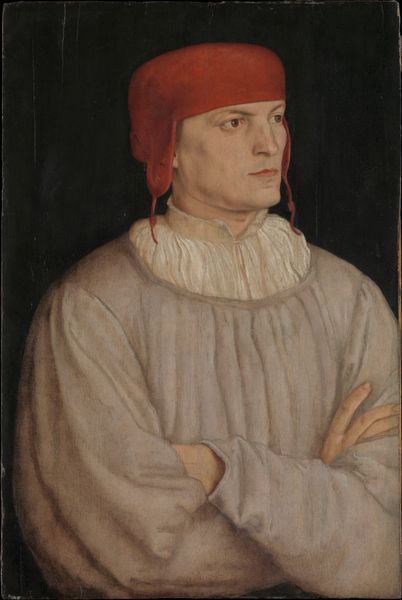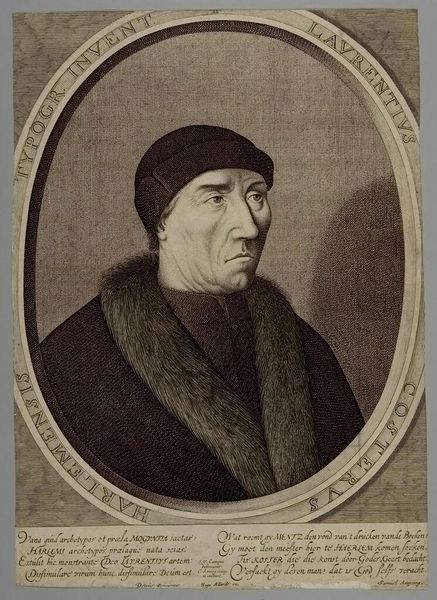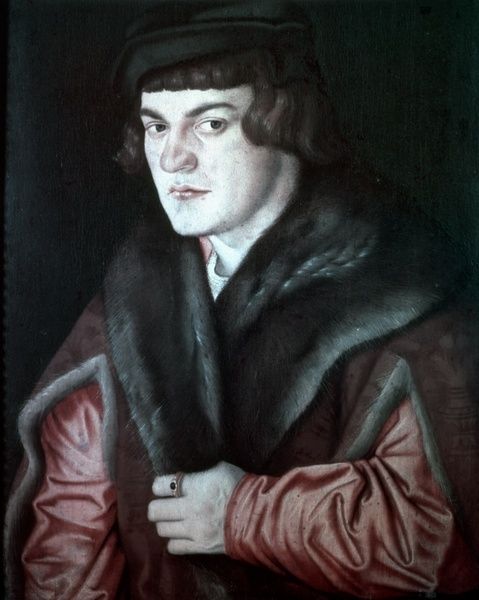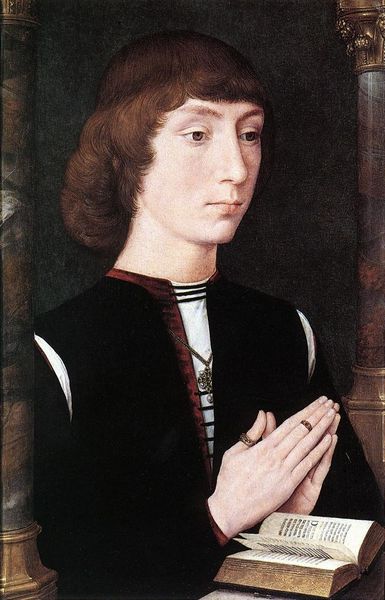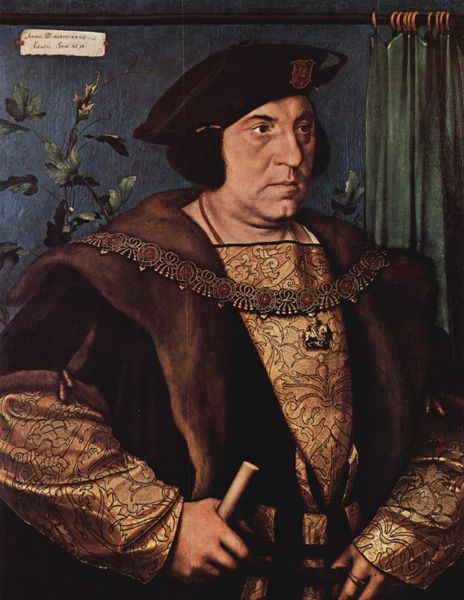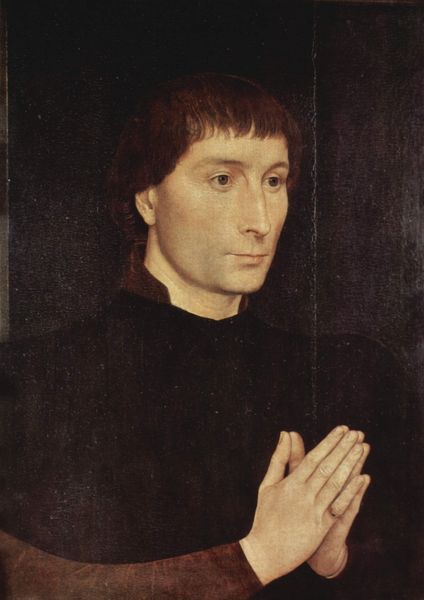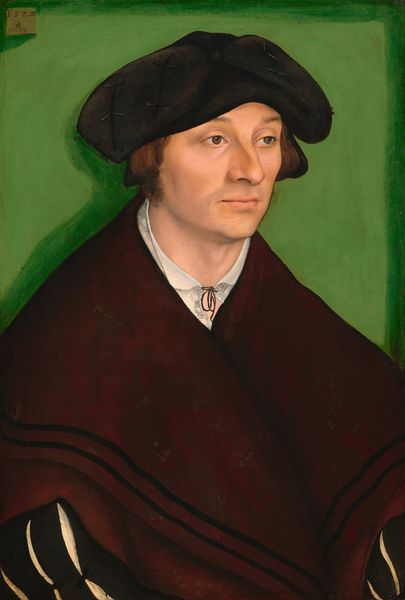
painting, oil-paint
#
portrait
#
painting
#
oil-paint
#
northern-renaissance
#
realism
Dimensions: 43.5 cm (height) x 31.5 cm (width) (Netto)
Hans Memling painted this portrait of a young man with a rosary in oil on panel, sometime in the 15th century. The smooth surface and luminous quality of the painting are testaments to the artist's mastery of oil paint, a relatively new medium at the time. Look closely, and you’ll see how Memling’s technique emphasizes the textures of the young man's fur-lined coat and the delicate beads of his rosary. The layering of glazes and meticulous brushwork create a sense of depth and realism, characteristic of the Early Netherlandish style. This wasn't just about aesthetics; the very act of painting with oils was tied to wider social and economic forces. The rise of oil painting coincided with the growth of commerce and trade in the Netherlands, as these paints allowed for greater detail and durability. The materials themselves— pigments, oils, and brushes—were products of a complex network of labor and production. Considering the materials and making of this painting encourages us to think about the world it inhabited, and the social values it reflected.
Comments
statensmuseumforkunst almost 2 years ago
⋮
The rosary tells us that the young man has been caught in a moment of meditation and worship. Even so, he is out in the open air. In the back-ground we see peasants tak-ing heavy sacks of grain to a mill while a single swan drifts along on the calm waters of a pond. An elegant couple ride by in another part of the scene. The landscape in the background places the young man in a contemporary Netherlandish everyday setting. At this time, realistic and commonplace elements were fundamental devices in art’s efforts to reach out to and connect with the viewer. To Memling, his native town of Bruges with its many churches, monasteries, convents and affluent merchants was the most im-portant market for his art. However, Memling also sup-plied altarpiece paintings to the Spanish court, where e.g. queen Isabella of Castile was a great admirer of Nether-landish art.
Join the conversation
Join millions of artists and users on Artera today and experience the ultimate creative platform.
